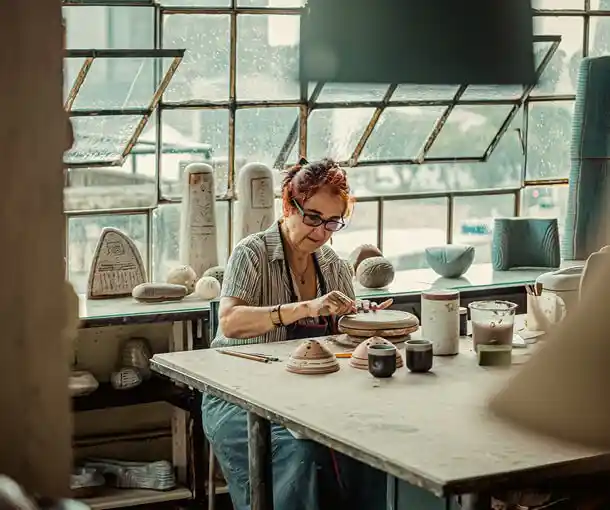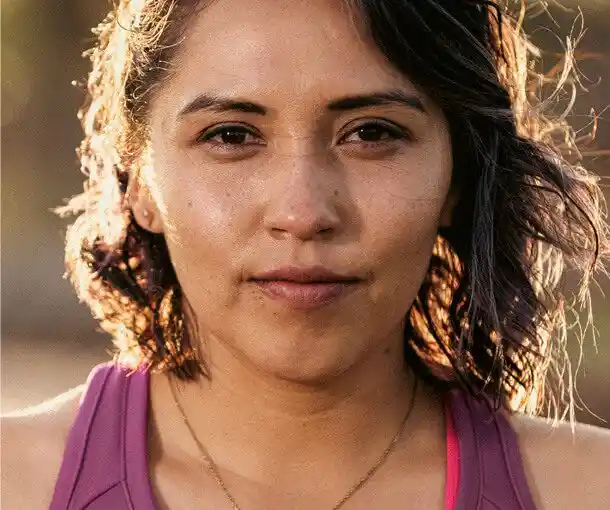The benefits of vitamin D
Your body needs vitamin D to absorb calcium from your food.1 With insufficient vitamin D levels, your intestines typically only absorb 10-15% of dietary calcium.2
Vitamin D is essential to maintain bone strength and muscle function and plays a vital role in several different body functions, including supporting healthy immune system function.3
How do you get vitamin D?
Exposure to the sun’s ultraviolet (UV) rays — UVB rays in particular — is needed for vitamin D3 (colecalciferol) to be made by the body. UVB radiation from the sun is the best source of vitamin D. You can also get vitamin D from foods herring, mackerel, liver, egg yolks and fortified foods including some cereals, milk, orange juice and breads.4
How does sunlight get converted to vitamin D3 in the skin?
When ultraviolet rays from sunlight penetrate the skin, they react with 7-dehydrocholesterol, a precursor to vitamin D3. This reaction forms vitamin D3 (colecalciferol) in the skin. It is then quickly converted by the liver and kidneys into an active form of vitamin D ready for the body to use.5
How much sun exposure do you need to get enough vitamin D?
How much sun exposure you need for healthy bones depends on several factors, including your skin type, what part of the body is exposed, the season and the latitude of where you live
- For those with fair skin — Aim for 5-10 minutes in summer with your arms exposed and avoiding the heat of the day will give you enough sun time. In winter it may take a little longer, up to 30 minutes depending on your latitude. Midday day sun is preferable in winter.6
- For those with darker skin — In summer, aim for 15 – 60 minutes with your arms exposed, avoiding the hottest part of the day. In winter depending on latitude it will take longer, aim for 20 minutes to 3 hours depending on the latitude. Midday sun is preferable in winter for those with darker skin.4
Regardless of skin tone, it’s important to remain sun safe, but not limited to wearing sunscreen and a hat. Although high melanin levels — which are present in people with darker skin — do help to reduce UV absorption to prevent sunburn, it does not prevent against skin cancer7. It is important to follow all sun safety guidelines for sun exposure, regardless of skin tone.
Who is at risk of not getting enough vitamin D?
About 1 in 4 Australians have vitamin D insufficiency.8 Who is at risk of having low vitamin D?:1
- Older adults, particularly if you are housebound or in care and not getting outside as often.
- People with darker skin. The pigment in dark skin reduces the penetration of UV light.
- People who live in an area with high levels of air pollution.
- People who avoid the sun for long periods by choice or for medical reasons.
- People who cover their skin body for religious or cultural reasons.
- People who have medical conditions that may affect the way your body absorbs, processes or stores vitamin D.
- Babies are at risk of vitamin D insufficiency if their mother has low levels during pregnancy and breastfeeding. While an excellent source of nutrients, breastmilk is generally low in Vitamin D.9 Breastfeeding mothers should speak to their healthcare practitioner if they are concerned about their vitamin D levels.
What are the symptoms of low vitamin D levels?
People who lack vitamin D may have no symptoms, or the symptoms may be vague and hard to pinpoint. Here are a few warning signs to look out for:
General aches & pain
For many people tiredness, subtle aches and pains, an overall feeling of being unwell or mood changes may be early indicators of vitamin D insufficiency.10,5 Non-specific back pain, joint pains and a generalised body ache are also common indicators.11 If you aren’t feeling at your best, speak to your doctor about evaluating your vitamin D levels to rule out this as a possible cause.
Muscle weakness
Muscle weakness and pain may be a symptom of vitamin D insufficiency in both children and adults.7
How do you find out if you lack vitamin D?
People with risk factors for low vitamin D may want a supplement. Take this simple online questionnaire online questionnaire to check if you might be at risk of vitamin D insufficiency. Talk to your doctor if you think you might have low vitamin D levels. Your doctor can order a blood test and make a recommendation for a vitamin D supplement that would suit your specific needs. Learn about which Ostelin product may be appropriate for you.
References available upon request.
MAT-AU-2401863
1 Osteoporosis Australia. What you need to know about osteoporosis. Consumer guide. 4th Edition 2017
2 Holick MF. Sunlight and vitamin D for bone health and prevention of autoimmune diseases, cancers, and for cardiovascular disease. American Journal of Clinical Nutrition 2004; 80(6 Suppl): 1678S-88S
3 Stroud ML. Vitamin D: A review. Australian Family Physician 2008; 37: 1002–5
4 Lamberg-Allardt C. Vitamin D in foods and as supplements. Progress in Biophysics and Molecular Biology. 2006;92(1):33-38.
5 Wacker M, Holick M. Sunlight and Vitamin D. Dermato-Endocrinology. 2013;5(1):51-108.
6 https://www.osteoporosis.org.au/sites/default/files/files/vitdconsumerguide.pdf
7 https://www.cancer.org/healthy/be-safe-in-sun/sun-damage.html
8 Australian Bureau of Statistics. Australian Health Survey: Biomedical Results for Nutrients, 2011-12. 4364.0.55.006. Available from: https://www.abs.gov.au/ausstats/abs@.nsf/Lookup/4364.0.55.006Chapter2002011-12. Accessed December 2019.
9 Paxton G. Nowson C. Mason R. McGrath J., et. al. Vitamin D and health in pregnancy, infants, children and adolescents in Australia and New Zealand: a Position Statement MJA 198 (3) 2013.
10 https://my.clevelandclinic.org/health/articles/15050-vitamin-d–vitamin-d-deficiency
11 Kanekar A, Sharma M, Joshi V. Vitamin D Deficiency—A Clinical Spectrum: Is There a Symptomatic Nonosteomalacic State?. International Journal of Endocrinology. 2010;2010:1-6.







